Russula aeruginea Fr. - Green Brittlegill
Phylum: Basidiomycota - Class: Agaricomycetes - Order: Russulales - Family: Russulaceae
Distribution - Taxonomic History- Etymology - Identification - Culinary Notes - Reference Sources
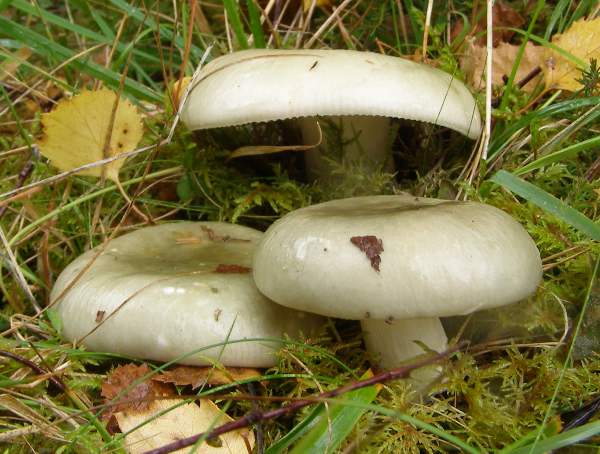
Few fungi have green caps, and among the brittlegills that occur in Britain and Ireland there are just two common ones; their identification is therefore not usually a problem. The Green Brittlegill has a grass-green cap, sometimes with yellowish tints but never vinaceous. Knowing that makes life a bit easier for those of us who find the many red, purple and pink brittlegills confusing!
Russula aeruginua is a gregarious mushroom, usually occurring in small scattered groups.
Distribution
A fairly common find in Britain and Ireland, the Green Brittlegill occurs throughout mainland Europe and is reported from many other parts of the world including NorthAmerica.
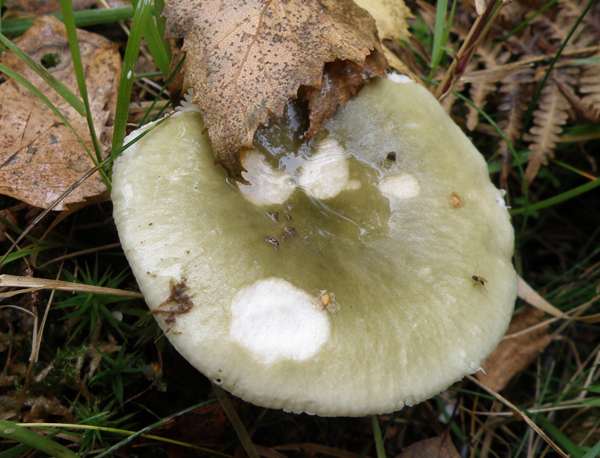
Taxonomic history
This neat brittlegill mushroom was described and given its currently-accepted scientific name by Elias Magnus Fries in 1863.
Synonyms of Russula aeruginea include Agaricus graminicolor Secr., Russula furcata var. graminicolor Gillet, and Russula graminicolor (Gillet) Quél.
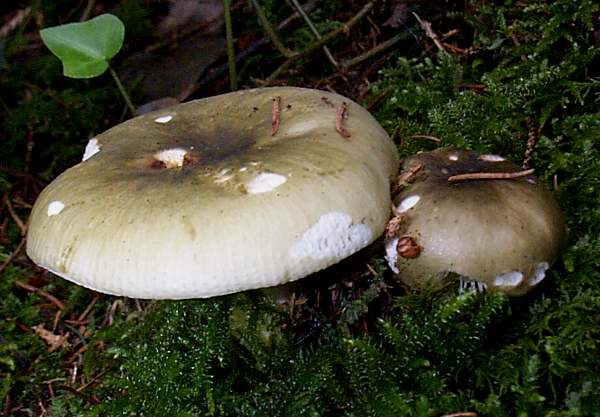
Etymology
Russula, the generic name, means red or reddish, and indeed many ofthe brittlegills have red caps (but many more are not, and some of those that are usually red can also occur in other colours!). The specivic epithet aeruginea means comes from the Latin prefix aerug-, which can mean blue-gree, green, or deep green. (In the past Russula aeruginea was commonly referred to as the Grass-green Russula.)
Identification guide
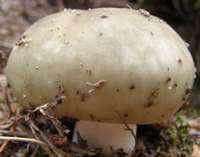 |
CapPale to very pale grass green, and becoming progressively paler towards margin, the cap of Russula aeruginea peels half way to the centre; convex, flattening only in the centre, sometimes with a slight depression; greasy when moist; margin sometimes faintly grooved; 4 to 9cm across; surface not cracked. |
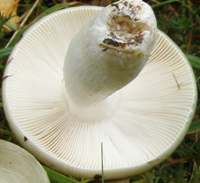 |
GillsWhite, eventually turning yellow with age, the gills of the Green Brittlegill are adnexed and crowded. |
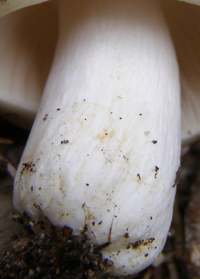 |
StemWhite, more or less cylindrical, sometimes tapering at the base; 4 to 8cm long, 0.7 to 2cm in diameter. |
Chemical tests |
The flesh has a slow pink reaction to iron salts (FeSO4). |
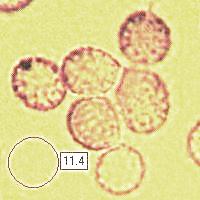 |
SporesEllipsoidal, 6-10 x 5-7μm (excluding spines); ornamented with rounded warts up to 0.7μm tall which are joined by a few fine lines to form a partial network. Spore printCeam. |
Odour/taste |
Not distinctive. |
Habitat & Ecological role |
Often found on the edges of pine forests but nearly always under birches. In common with other members of the Russulaceae, Russula aeruginea is an ectomycorrhizal mushroom. |
Season |
July to October in Britain and Ireland. |
Similar species |
Russula virescens the Greencracked Brittlegill, is somewhat larger and distinguished by its cap surface crazing as it matures. |
Culinary Notes
The Green Brittlegill is recorded as edible in some field guides and as inedible in others. As these mushrooms are rarely found in sufficient numbers to justify gathering them to eat, I suggest they are treated as fungi for photographs.
Reference Sources
Pat O'Reilly (2016). Fascinated by Fungi, First Nature Publishing
Geoffrey Kibby (2011).The Genus Russula in Great Britain, published by G Kibby.
Roberto Galli (1996). Le Russule. Edinatura, Milan.
Paul M. Kirk, Paul F. Cannon, David W. Minter and J. A. Stalpers. (2008). Dictionary of the Fungi; CABI.
Taxonomic history and synonym information on these pages is drawn from many sources but in particular from the British Mycological Society's GB Checklist of Fungi.
Fascinated by Fungi. Back by popular demand, Pat O'Reilly's best-selling 450-page hardback book is available now. The latest second edition was republished with a sparkling new cover design in September 2022 by Coch-y-Bonddu Books. Full details and copies are available from the publisher's online bookshop...

